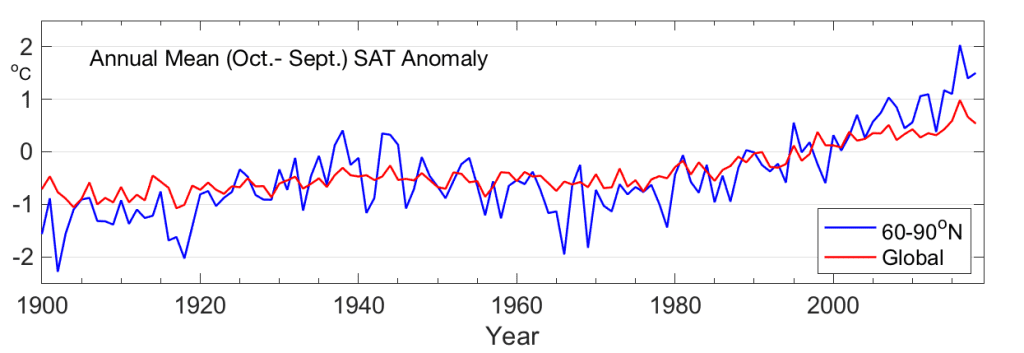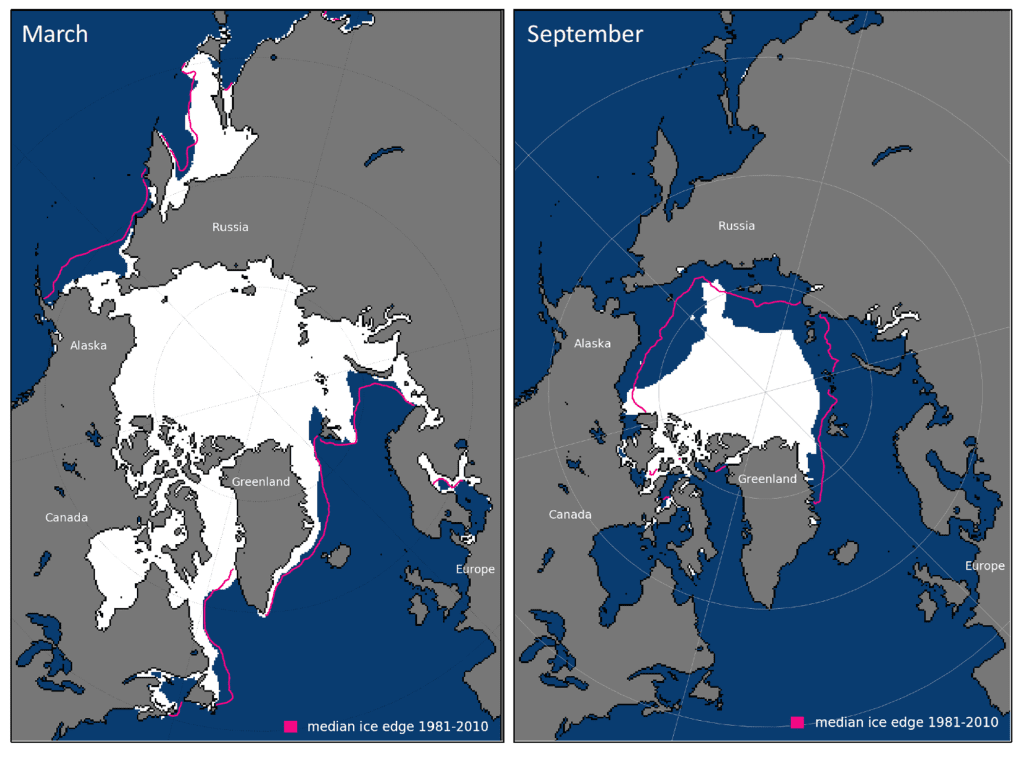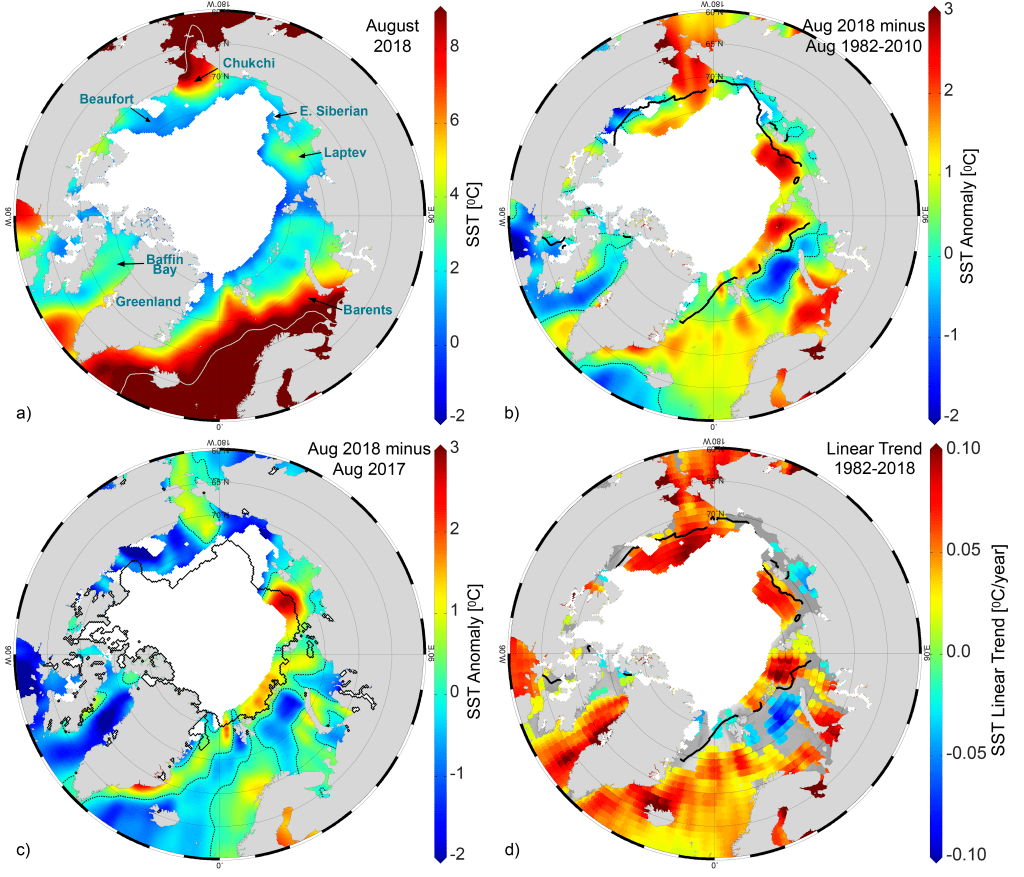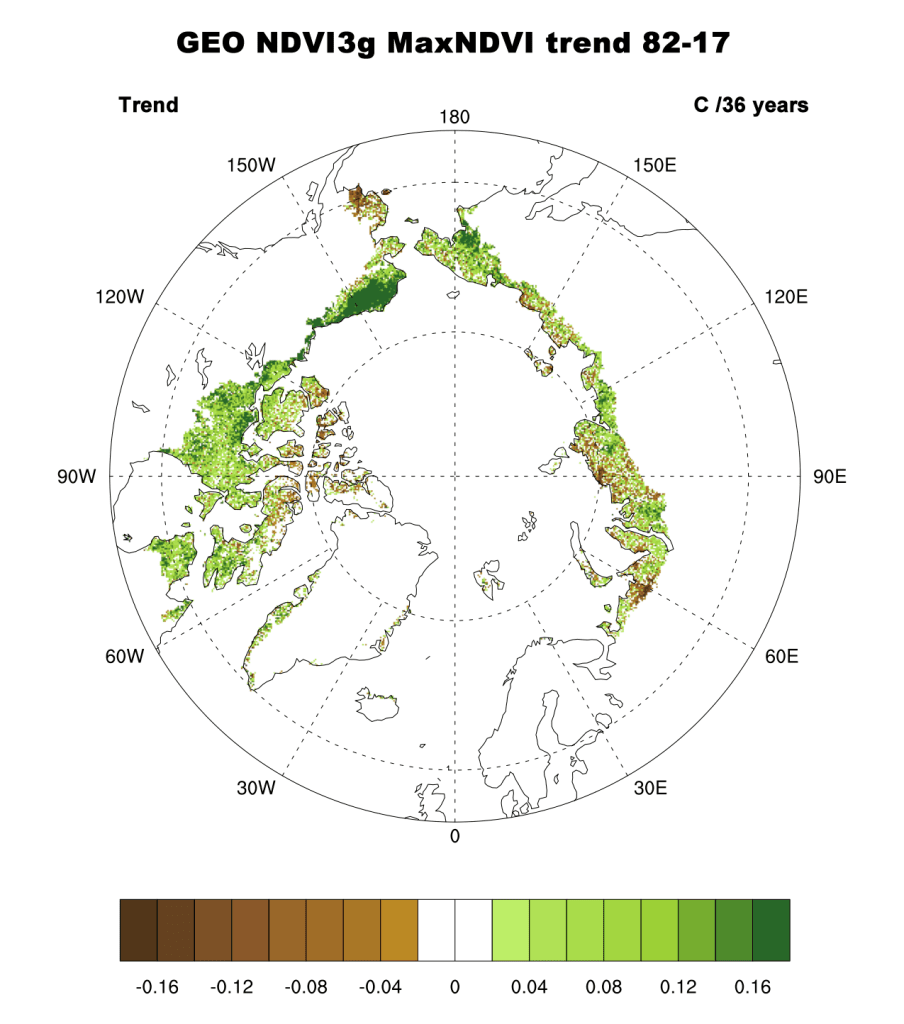August 2018
Surface Air Temperature
Arctic surface air temperature is an indicator of both regional and global climate change. Although there are year-to-year and regional differences in air temperatures driven by natural variability, the magnitude, year-to-year persistence, and Arctic-wide character of recent temperature increases is a major indicator of global climate change and the concentration of atmospheric greenhouse gases.
Surface Air Temperature Read More »
Terrestrial Snow Cover
Snow covers the Arctic land surface for up to 9 months each year, and influences the surface energy budget, ground thermal regime, and freshwater budget of the Arctic. Snow also interacts with vegetation, affects biogeochemical activity, and influences migration and access to forage for wildlife, with consequences for ecosystems.
Terrestrial Snow Cover Read More »
Greenland Ice Sheet
The Greenland ice sheet plays a crucial role on our planet and in the Arctic. The high albedo of the ice sheet contributes to modulating the amount of solar energy absorbed by the Earth and controls atmospheric circulation because of its location and topography. Moreover, Greenland represents a major contributor to current and projected sea level rise, through surface runoff and calving.
Greenland Ice Sheet Read More »
Sea Ice
Arctic sea ice cover varies substantially over the year, with end-of-winter ice cover generally being two to three times as large as at the end of summer. Sea ice is an important element of the Arctic system: (1) acting as a barrier between the underlying ocean and the atmosphere, (2) limiting the amount of absorbed solar energy during the summer due to its high albedo, (3) providing a habitat for biological activity, and (4) limiting human access to the Arctic Ocean.
Sea Surface Temperature
Summer sea surface temperatures (SST) in the Arctic Ocean are driven mainly by the amount of incoming solar radiation absorbed by the sea surface. Solar warming of the Arctic surface ocean is influenced by the distribution of sea ice (with greater warming occurring in ice-free regions), cloud cover, water color, and upper-ocean stratification. As the area of sea ice cover decreases, more incoming solar radiation is absorbed by the ocean and the warmer ocean, in turn, melts more sea ice.
Sea Surface Temperature Read More »
Arctic Ocean Primary Productivity: The Response of Marine Algae to Climate Warming and Sea Ice Decline
Autotrophic single-celled algae living in the sea ice (ice algae) and water column (phytoplankton) are the main primary producers in the Arctic Ocean. Through photosynthesis, they transform dissolved inorganic carbon into organic material. Consequently, primary production provides a key ecosystem service by providing energy to the entire food web in the oceans.
Tundra Greenness
Arctic tundra vegetation has responded to dramatic environmental changes over the course of the last several decades.
Authors and Affiliations
Authors and their affiliations for all 2018 essays.
Authors and Affiliations Read More »






